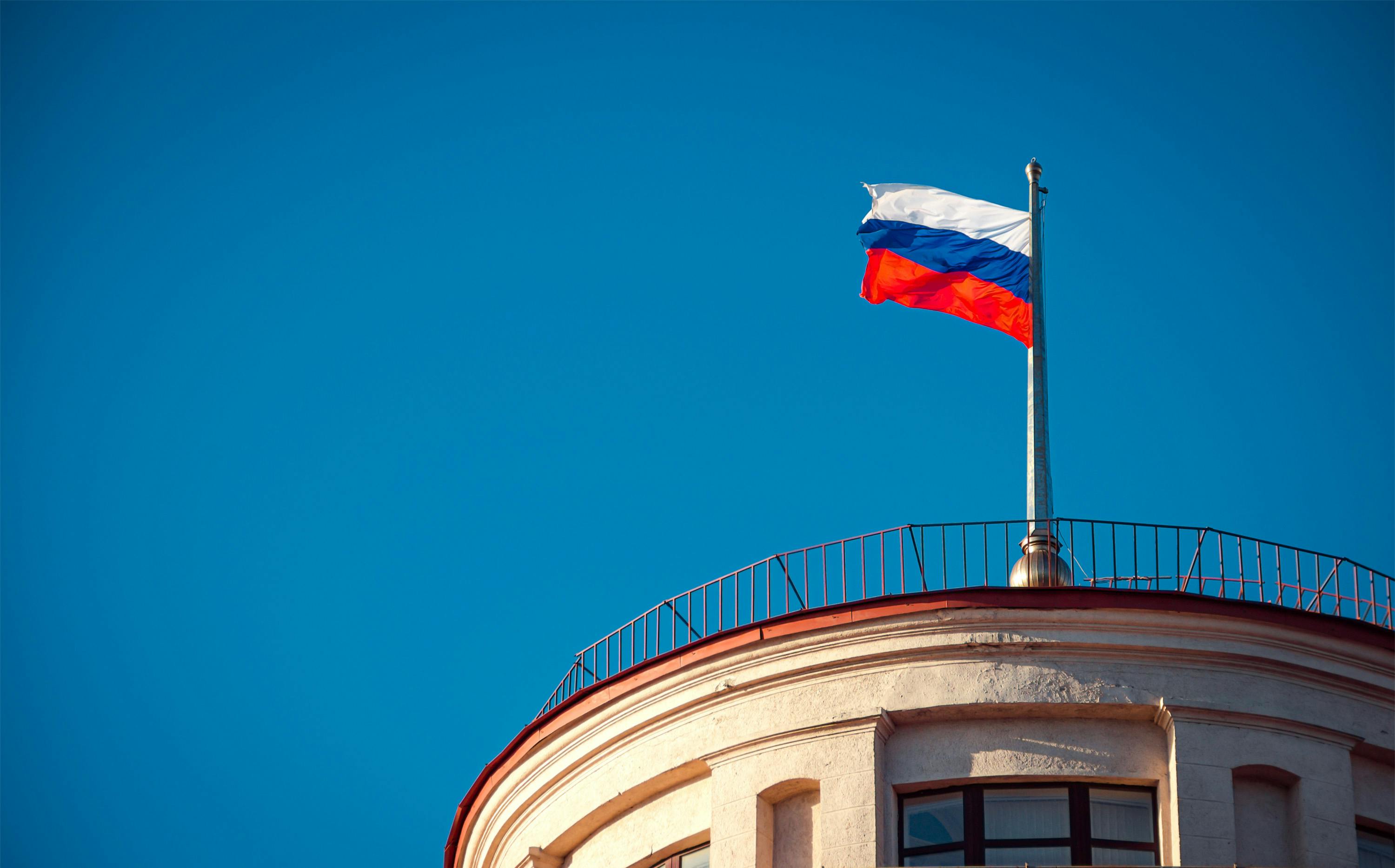Authoritarian Soft Power
A review of Alexander Cooley and Alexander Dukalskis, “Dictating the Agenda: The Authoritarian Resurgence in World Politics” (Oxford University Press, 2025).
.jpg?sfvrsn=4ae453c9_8)
Published by The Lawfare Institute
in Cooperation With

This is an excellent book. In “Dictating the Agenda: The Authoritarian Resurgence in World Politics,” Alexander Cooley and Alexander Dukalskis offer one of the most penetrating and original accounts yet of how authoritarian regimes are reshaping the global order. They argue that autocrats are no longer satisfied with controlling their domestic arenas; they now seek to influence, constrain, and ultimately redefine the international norms that once hemmed them in.
The authors’ core insight is that authoritarian politics has gone transnational. Instead of merely resisting liberal interference, regimes from Moscow to Beijing to Ankara have learned to project influence outward—reframing legitimacy, rewriting rules, and manipulating the mechanisms of globalization to their own advantage. In this reading, the contemporary global contest is not just about territory or ideology; it is about who gets to decide what counts as normal.
Cooley and Dukalskis describe this process through what they call the “authoritarian snapback.” The concept captures a strategic progression: First, illiberal governments stigmatize liberal actors and ideas; then they shield their domestic publics from them; finally, they export their own narratives, norms, and incentives abroad. When successful, these maneuvers allow authoritarians not merely to parry liberal initiatives but to dictate the agenda—determining which issues are discussable, which words are acceptable, and which institutions can be trusted.
This argument marks a subtle but crucial shift. For decades, most analyses of democratic decline have focused inward, on the erosion of checks and balances, populist demagoguery, or weak parties. “Dictating the Agenda” redirects attention outward, showing that authoritarian survival now depends equally on manipulating the international environment. The threat to democracy, in their telling, is not only domestic polarization or complacency; it is a new ecosystem of influence that erodes liberal confidence from without as well as within.
The early chapters recount how liberal norms became global in the first place. During the 1990s, international institutions, donor agencies, and advocacy networks exported a vision of democracy and markets as the universal template for progress. That model rested on a dense web of foundations, aid programs, think tanks, and nongovernmental organizations (NGOs)—all animated by an assumption that openness and transparency were self-legitimating. Yet that very openness created vulnerabilities. As Western confidence faltered, authoritarian states learned to exploit the same transnational pathways once used to promote liberalism. The infrastructure of democracy promotion became, in time, an infrastructure for its contestation.
The story that follows is one of adaptation and learning. Autocrats began by adopting defensive postures: designating independent NGOs as “foreign agents,” limiting external funding, and casting critics as puppets of hostile powers. But soon, these tactics evolved into offensive instruments of projection. States such as China and Russia built international media networks, funded think tanks abroad, and courted intellectuals and celebrities to soften their images. Others pursued similar strategies suited to their scale—Turkey’s outreach to Turkic diasporas, Hungary’s efforts to shape European discourse, Saudi Arabia’s sponsorship of elite sporting events. What ties these efforts together is the belief that global legitimacy can be manufactured as skillfully as it can be earned.
Cooley and Dukalskis present this transformation not as a grand conspiracy but as a pattern of convergent innovation. Authoritarian regimes observe, copy, and refine one another’s techniques. The resulting convergence—whether through deliberate coordination or mutual emulation—produces a worldwide countercurrent to liberal norms once taken for granted. In their hands, the “authoritarian resurgence” is less a bloc than an ecosystem: adaptive, networked, and opportunistic.
Where the book excels is in mapping this dynamic across unexpected arenas. Instead of limiting their analysis to diplomacy or coercion, the authors trace how authoritarian influence operates in spaces many still regard as apolitical: media, consumer activism, higher education, and sports. Each chapter illuminates how tools of soft power have been repurposed to advance illiberal ends.
In the media sphere, they document the rise of globally ambitious outlets—RT, CGTN, Sputnik, and a host of online content farms—that flood digital ecosystems with narratives designed to blur the distinction between fact and propaganda. The purpose is not persuasion so much as exhaustion: to make audiences doubt that truth exists at all. In a world saturated with conflicting claims, credibility becomes a partisan badge rather than a public good.
The discussion of consumer activism is especially novel. Boycotts, sanctions from below, and ethical branding were once hallmarks of liberal civil society. Now, they have been co-opted by authoritarian states, which organize “patriotic” boycotts, reward compliant corporations, and punish those who take political stands. Through market mechanisms and nationalist outrage, regimes project power without tanks or treaties. The authors’ point is not that consumer activism has died, but that its moral vocabulary has been inverted.
In higher education, the same logic applies. Universities that once exported liberal norms through partnerships and exchanges now find themselves navigating gifts, collaborations, and joint ventures that come with implicit limits. Authoritarian governments use scholarships, research funding, and cultural institutes to shape agendas and constrain criticism. Cooley and Dukalskis capture the uncomfortable paradox that institutions devoted to open inquiry can become vectors of self-censorship when financial dependence meets political sensitivity.
Even global sports—often treated as mere entertainment—have become arenas of geopolitical competition. Hosting mega-events, owning clubs, or dominating federations allows regimes to showcase modernity, competence, and global relevance. Prestige substitutes for persuasion. A well-staged spectacle, the authors suggest, can launder a reputation more effectively than any press release.
The cumulative effect of these examples is unsettling. What they reveal is not the collapse of the liberal order but its mutation into a more contested space. The playing field of ideas that once seemed tilted toward democracy is now crowded with rivals who have mastered its instruments. Cooley and Dukalskis show that illiberal regimes no longer reject globalization; they have learned to weaponize it.
Their analysis has clear strengths. First, it expands the frame of inquiry. By shifting attention from domestic institutions to transnational networks, the book redefines how scholars should think about regime resilience. Authoritarian power is sustained not only by repression or ideology but by control over flows of information, finance, and status that cross borders.
Second, their “snapback” model gives conceptual shape to what had previously been a descriptive muddle. It provides a sequence—stigmatize, shield, project, dictate—that captures how regimes evolve from isolation to agenda-setting. Even where the boundaries blur, the model clarifies the logic of escalation.
Third, the book brings underexplored terrain into focus. The chapters on consumer activism and sports are particularly revealing because they expose how soft power operates through culture and consumption, not just diplomacy or propaganda. The authors remind readers that politics today unfolds in the algorithms of streaming platforms, the sponsorships of stadiums, and the partnerships of universities as much as in the corridors of ministries.
Yet the argument is not airtight. The authors’ reach sometimes exceeds their empirical grasp. Some claims rely on anecdote or inference rather than systematic data. Demonstrating that authoritarians have influence is one thing; proving that they have redefined the global agenda is another. Liberal norms remain entrenched in many international institutions—from human rights law to scientific cooperation—even if their moral authority has eroded. The world may be entering a phase of plural contestation rather than outright illiberal dominance.
Moreover, not all authoritarian regimes are alike. Cooley and Dukalskis sometimes speak of them as a coherent formation, but their interests diverge sharply. China’s state-capitalist model, Russia’s revanchism, Turkey’s religious nationalism, and Saudi Arabia’s dynastic theocracy share tactics more than strategy. The concept of an “authoritarian resurgence” risks implying coordination where there is mostly parallel experimentation.
A further difficulty lies in measurement. Influence is elusive, and the authors rely on qualitative evidence that, while persuasive, is hard to quantify. Future researchers will need to develop indicators—shifts in discourse, funding networks, and alliance behavior—to test how far authoritarian narratives actually penetrate global norms. The book, to its credit, provides a framework for asking those questions even if it cannot yet answer them.
It is, however, striking that Cooley and Dukalskis make no reference to Anne Applebaum’s “Autocracy, Inc.: The Dictators Who Want to Run the World,” which appeared just as “Dictating the Agenda” went to press. The omission is unfortunate, not because Applebaum covers identical ground—her approach is more journalistic and narrative than theoretical—but because both works diagnose similar global phenomena through complementary lenses. Each describes a new, networked form of authoritarianism that operates across borders, feeds on the vulnerabilities of open societies, and converts the instruments of globalization into tools of domination.
Applebaum’s account traces the personal, financial, and ideological entanglements that link strongmen from Moscow to Riyadh, from Beijing to Budapest. Her emphasis is on the human infrastructure of autocracy: the businessmen, propagandists, mercenaries, and political consultants who form what she calls a “mutually reinforcing fraternity of power.” Cooley and Dukalskis, by contrast, focus on institutional logics—how regimes learn, emulate, and reshape global norms. Applebaum’s portraits of individual enablers and Cooley and Dukalskis’s analysis of systemic mechanisms describe two faces of the same phenomenon. Combined, these perspectives produce a fuller picture.
That “Dictating the Agenda” does not engage Applebaum’s work is therefore a missed opportunity. It is easy to imagine how Cooley and Dukalskis’s “authoritarian snapback” model might have been enriched by Applebaum’s ethnography of autocratic collaboration, just as her narrative could benefit from their conceptual precision. The absence of dialogue between the two reflects a deeper gap between academic and public-intellectual treatments of global authoritarianism. Each camp often writes as though the other did not exist—academics privileging peer-reviewed citations over reportage, and journalists wary of theoretical abstraction. Yet the problem that both diagnose—the reorganization of power in the 21st century—demands precisely the synthesis their mutual silence prevents.
Despite these limitations, “Dictating the Agenda” makes a major contribution to understanding the changing texture of global politics. It demonstrates that the struggle between liberalism and authoritarianism is no longer waged only in elections or wars; it is embedded in the institutions, markets, and cultural systems that define everyday international life. The contest now is as much about shaping meanings as about controlling territories.
What gives the book its urgency is not alarmism but clarity. Cooley and Dukalskis do not lament democracy’s decline as fate; they expose the mechanisms through which illiberal regimes exploit liberal vulnerabilities. Their message is unsentimental: Openness can be turned against itself if left undefended. Liberal democracies cannot rely on moral superiority alone; they must compete again in the arenas of influence they once dominated.
That does not mean mimicking authoritarian tactics. It means investing once more in credible institutions, transparent partnerships, and global narratives that emphasize accountability and pluralism. Democracies need to remember how to persuade, not just how to preach.
“Dictating the Agenda” ends on a note that is both warning and invitation. The authors remind readers that the contest for influence is ultimately a contest for meaning—over what counts as truth, fairness, and legitimacy. Defending democracy, therefore, requires intellectual as well as institutional renewal.
For all of its analytical restraint, the book leaves a powerful impression. It forces readers to confront how profoundly the liberal order’s instruments—aid, education, culture, and commerce—have been retooled by its rivals. It also restores a sense of agency: These trends are not irreversible, but they demand attention and imagination.
In the years ahead, as scholars and policymakers grapple with how democracies can navigate a fragmented, contested international order, “Dictating the Agenda” will be an essential source in this global debate about the future of democracies.

.png?sfvrsn=dbf705f_3)



